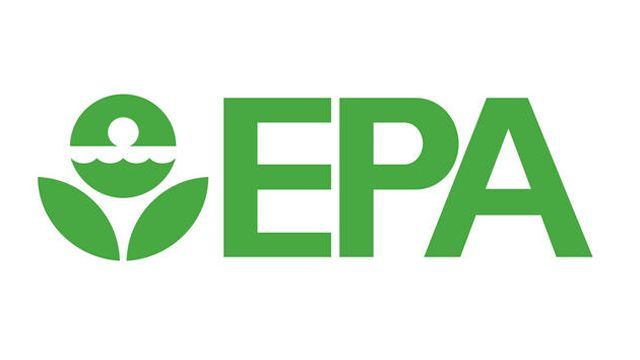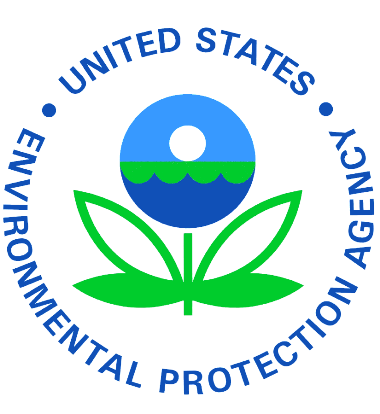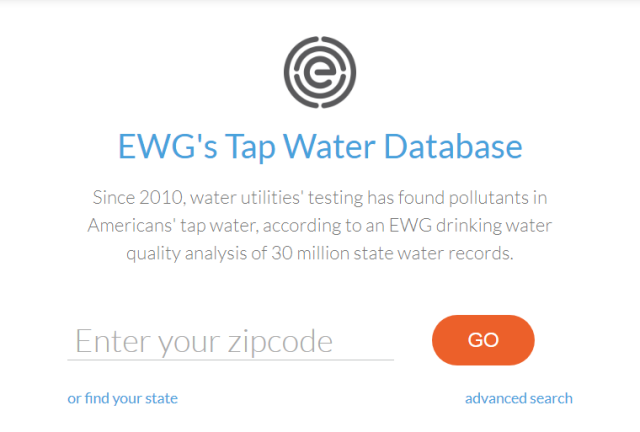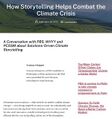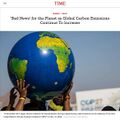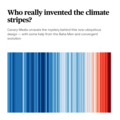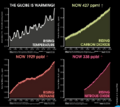Category:Clean Water
Water is the most critical resource issue of our lifetime and our children's lifetime. The health of our waters is the principal measure of how we live on the land...
Water is one of the most basic of all needs - we cannot live for more than a few days without it. And yet, most people take water for granted. We waste water needlessly and don't realize that clean water is a very limited resource. More than 1 billion people around the world have no access to safe, clean drinking water, and over 2.5 billion do not have adequate sanitation service. Over 2 million people die each year because of unsafe water - and most of them are children!
~ Robert Alan Aurthur
http://en.wikipedia.org/wiki/Clean_Water_Act
https://www.epa.gov/laws-regulations/summary-clean-water-act
Clean Water Act
Congress first passed the Federal Water Pollution Control Act in 1972. Amending the law five years later in what became known as the “Clean Water Act” Congress regulated by permit all end-of-pipe or "Point Source" discharges to navigable waters of the United States. In 1987, it extended the Clean Water Act to cover indirect or “Non-Point Source” pollution, most prevalent in stormwater runoff.
Stormwater Runoff
Stormwater runoff is water from rain or melting snow that flows from roofs, paved roads and parking lots, bare soil, and sloped lawns that cannot be absorbed in the ground. As it flows, the runoff collects pollutants like fertilizers, pesticides, oil and grease, animal wastes and sediments and carries them directly to coastal waters or to storm drains, which, in the case of coastal communities, often discharge to harbor waters. These pollutants restrict recreational use and degrade the marine habitat resulting in bathing beach closures and shellfish harvesting restrictions.
Common Pollutants
- • Nutrients: Nitrogen & phosphorous (fertilizers, animal wastes, septic discharge)
- • Man-Made Chemicals: Pesticides & herbicides
- • Pathogens: Bacteria & Viruses from pet waste and failing septic systems
- • Metals: Copper, Lead, Mercury, Chromium in car brake linings and tires
- • Hydrocarbons: Gasoline and Oil leaks from faulty tanks and improper disposal
- • Sediments: Dirt from road runoff and construction sites
- • Organic Materials: Oxygen depleting Leaves, Grass Clippings, Plant Materials
- • Trash and Debris: Litter is aesthetically unappealing and a hazard to wildlife
_________________________________________________________________________________
Subcategories
This category has the following 13 subcategories, out of 13 total.
Pages in category "Clean Water"
The following 54 pages are in this category, out of 54 total.
C
E
G
- Generation Green
- George E. Brown Jr
- Going Green: Texas v. Pennsylvania
- Google Earth Timelapse
- Green Bank in Maryland - and More
- Green Best Practices
- Green New Deal
- Green Party
- Green Politics 360
- Green Politics with GreenPolicy360
- Green Stories of the Day
- Green Stories of the Day - GreenPolicy360 Archive
- GreenPolicy360 Archive Highlights 2013
- GreenPolicy360 Archive Highlights 2014
- GreenPolicy360 Archive Highlights 2015
- GreenPolicy360 Archive Highlights 2016
- GreenPolicy360 Archive Highlights 2017
- GreenPolicy360 Archive Highlights 2018
- GreenPolicy360 Archive Highlights 2019
- GreenPolicy360 Archive Highlights 2020
- GreenPolicy360 Archive Highlights 2023
Media in category "Clean Water"
The following 62 files are in this category, out of 262 total.
(previous page) (next page)- Record tumble - climate change.png 727 × 333; 27 KB
- Rep. George E Brown and a young student remembering.png 640 × 325; 109 KB
- Republican Party 2024 Climate Strategy.png 589 × 344; 44 KB
- Robert W Kates.jpg 400 × 231; 43 KB
- Scott Pruitt - running for James Inhofe Senate seat - Apr 2022.png 585 × 480; 281 KB
- Scott pruitt epa.jpg 640 × 427; 41 KB
- SCOTUS decision on water protection.png 535 × 424; 299 KB
- Shell lawsuit Feb 2023.png 768 × 534; 229 KB
- Shrinking earth.jpg 762 × 600; 167 KB
- Shrinking the Earth, The Rise and Decline of Natural Abundance.jpg 180 × 274; 10 KB
- Small Is Beautiful 1973.jpg 257 × 388; 17 KB
- Speed and Scale Action Plan.png 550 × 867; 132 KB
- Speed and Scale Poster.png 490 × 772; 101 KB
- Steven J Schmidt, May 2023.png 363 × 484; 383 KB
- Story telling and science education.png 515 × 480; 171 KB
- Surprise climate deal.png 589 × 735; 83 KB
- Telling stories of solutions for the climate crisis.jpg 600 × 640; 121 KB
- Temperature - SST World via Climate Change Institute - 2023 chart.png 800 × 509; 144 KB
- Temperature World - chart via Climate Change Institute.jpg 800 × 509; 67 KB
- The Climate Dictionary - as of 2023.png 600 × 727; 200 KB
- The Movement and the Madman - 2.jpg 600 × 746; 148 KB
- The U.S. Role in the World ... Congressman George E Brown - 1969.jpg 448 × 334; 104 KB
- Time Nov 10 2022 COP27.jpg 600 × 600; 92 KB
- Timelapse in Google Earth -1.jpg 800 × 241; 69 KB
- Timelapse in Google Earth-2.jpg 800 × 469; 151 KB
- Timelapse in Google Earth-3.jpg 372 × 556; 52 KB
- Timelapse in Google Earth-4.jpg 525 × 244; 51 KB
- Timelapse in Google Earth-5.jpg 800 × 528; 124 KB
- Timeline-climate-change-history-485-million years.jpg 800 × 276; 42 KB
- Tracking Biden's Environmental Record - WaPo - Feb 2021.jpg 766 × 326; 64 KB
- Tracking Biden's Environmental Record - WaPo listing - Feb 2021.jpg 588 × 397; 35 KB
- Trump promise to oil ceo gathering - 1.png 440 × 108; 19 KB
- Trump promise to oil ceo gathering - 2.png 480 × 495; 291 KB
- Trump promise to oil ceo gathering - 3.png 480 × 284; 270 KB
- Trump promise to oil ceo gathering - 4.png 480 × 480; 333 KB
- Turning the Toxic Tide-Florida.jpg 540 × 304; 43 KB
- Union Oil Spill On the Calif Coast - February 1969.png 640 × 351; 371 KB
- Union Oil Spill On the Calif Coast - January 1969.png 640 × 326; 196 KB
- Update - James Hansen July 2023 'We are fools'.png 595 × 800; 610 KB
- US Public Law 95-367.png 732 × 469; 149 KB
- US Role George E Brown 2.pdf ; 151 KB
- US Role George E Brown 3.pdf ; 157 KB
- USC Daily Trojan Sen Nelson speech day after first Earth Day .jpg 640 × 384; 97 KB
- Vietnam Moratorium Committee-Documentary Intro.jpg 640 × 392; 34 KB
- Vorsorgeprinzip at GreenPolicy360 - sjs.png 611 × 758; 164 KB
- Wallace Smith Broecker.jpg 525 × 424; 93 KB
- Water shortage 4B people sci report-2016.png 853 × 233; 148 KB
- Water stress index map maplecroft.jpg 518 × 303; 123 KB
- Watershed monitoring earthscience m.png 572 × 360; 143 KB
- We are all crew.jpg 448 × 181; 17 KB
- Wetlands - Wetlands Day.png 640 × 492; 333 KB
- Who really invented the climate stripes - Climate Change Education.png 600 × 600; 234 KB
- Whole Earth Catalog-Internet Archive-4-23-2021.jpg 592 × 305; 48 KB
- Winning on the climate legis - AOC.png 480 × 519; 249 KB
- Youth vote estimates 2016 primary.png 800 × 490; 257 KB
- Zack Labe - climate viz - June 2024.png 675 × 600; 261 KB
